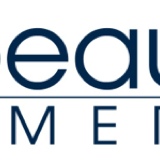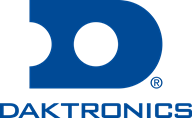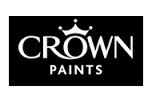Information
-
Document No.
-
Audit Title
-
Picture of machine
-
Client / Site
-
Conducted on
-
Prepared by
-
Location
-
Personnel
Documentation
-
New installation or transferred machine?
-
For new machine, has PM program been documented?
-
For transferred machine were PM records received?
-
Are there training manuals / documentation for operators & maintenance?
1.) Machine Guarding
-
1.1 Are all pulleys and belts, chains, sprockets and other power transmission sources guarded?
-
1.2 Are operations that have rotating parts, pinch points, nip points, etc., guarded?
-
1.3 If the machine is designed for a fixed location is it securely anchored?
-
1.4 Are commonly used tools at hand so people are not encouraged to improvise, at risk of doing unsafe activities?
2.) Equipment Shutdown
-
2.1 Is there a single, lockable, clearly marked electrical power disconnect?
-
2.2 Are isolation valves for air, steam and other utilities accessible and marked?
-
2.3 Is there an adequate number of properly labeled manual reset emergency stops?
-
2.4 If equipment has pneumatic or hydraulic cylinders or motors, does the fluid power circuit have a solenoid block and bleed valves-interlocked to the emergency stop circuit?
-
2.5 Have employees who will perform repairs, maintenance and servicing operations been trained in the equipment specific lockout/tag out or chemical handling procedures before they have to perform these operations?
-
2.6 Have the equipment- specific procedures been put in writing and are they easily accessible?
3.) Walking Surfaces
-
3.1 Are floors and aisles clear of any slippery areas or other trip hazards?
-
3.2 Are changes in floor elevations clearly identified by color coding where necessary?
-
3.3 The equipment does not produce discharge on the floor that are not adequately contained or directed towards drains?
-
3.4 Should non-slip surface coatings be applied around the equipment?
-
3.5 Has all construction debris, packaging materials, and setup equipment been removed from working areas?
4.) Electrical
-
4.1 Is all conduit, cable, and wire properly attached to all supports and tightly connected to junction and outlet boxes?
-
4.2 There is no evidence of fraying on electrical cords?
-
4.3 Are cords free of Grease, oil, and chemical?
-
4.4 Are cords used so they are not on pipes, nails, etc.?
-
4.5 Is all electrical equipment secured to a surface?
-
4.6 Are switches mounted in a clean, tightly closed metal box?
-
4.7 Switches do not show signs of overheating?
-
4.8 Are switches easily accessible and the paths to them free of obstructions?
-
4.9 Are all unused openings in junction boxes plugged?
-
4.10 Are all controls properly labeled?
-
4.11 Do electrical push buttons have correct color coding? ( Only stop buttons should be red)
-
4.12 Have all employees who may be exposed to electrical voltage equal or greater than 50 volts been given electrical safety training?
-
4.13 Are all load center panel areas accessible and clear of obstructions?
5.) Ladders, platforms and stairs.
-
5.1 Are platforms that are more than 4 feet above the floor level equipped with standard railing and toe boards?
-
5.2 Are fixed ladders properly secured against movement?
-
5.3 Are ladders that are more than 20 feet in unbroken lengths provided with safety cages that start between 7 & 8 feet off the floor and extends at least 42" above the top landing?
-
5.4 Do stairs have handrails on them?
-
5.5 Is there a mid-rail?
-
5.6 Do crossovers over equipment have handrails?
6.) Personal Protective Equipment
-
6.1 Has a PPE assessment been completed for this equipment?
-
6.2 Has engineered solutions been investigated before the implementation of PPE?
-
6.3 There are no special PPE requirements for the equipment or operations?
-
6.4 Has the appropriate PPE been provided to the employees?
-
6.5 Have employees been trained in the proper use/care of PPE?
7.)Ergonomics
-
7.1 Does the equipment require employees to manually handle raw materials or finished product?
-
7.2 If it does, have the ergonomic risk associated with those task been evaluated from a standpoint of weight, distance, frequency of task?
-
7.3 Are controls easy to reach and laid out in a manner that makes them easy to read and use for the equipment operator?
-
7.4 Does operation of equipment require employees to stand for extended periods of time?
-
7.5 If so are there mats?
-
7.6 Have operators been trained in the operation of the equipment, manufacturer's requirements for operating and maintaining, equipment safeguards, warning systems, etc.?
-
7.7 Are there sharp edges on the equipment that could cut the operator or others passing by the equipment?
-
7.8 Does operation of the equipment require the operator to engage in highly repetitive hand, wrist, arm, and finger movement or exertion?
-
7.9 Is frequent bending, twisting, and reaching required?
8.) Industrial Hygiene
-
8.1 If any chemical agents are required for the operation, servicing, or maintenance of the equipment, have MSDSs been obtained?
-
8.2 Have the employees been trained in the chemical hazards, exposures and required PPE?
-
8.3 Does the equipment emit any hazardous chemicals?
-
8.4 Are there excessive noise levels?
-
8.5 are there excessive temperatures or heat being put off?
-
8.6 Is there radiation or other physical hazards?
-
8.7 Have those hazards been evaluated?
-
8.8 Are there hot surfaces that require quarrying or labeling and if so has it been done?
-
8.9 Are appropriate warning labels provided on the equipment?
-
8.10 If ventilation systems are required on the equipment, are flow indicators provided and have the operators been trained in using and interpretation of them?
-
8.11 Are low-flow alarms installed on critical ventilation systems?
9.) emergency Procedures
-
9.1 Have employees been trained in emergency shut-Dow procedures?
-
9.2 Does the placement of the equipment present any evacuation hazards in the event of a serious equipment malfunction?
10.) Fire Hazards
-
10.1 Does the equipment present any inherent fire hazards such as open flames, flammable liquids, solid and gases, etc.?
-
10.2 are these hazards properly controlled by safeguards built into the equipment or provided outside, over and around the equipment?
-
10.3 Are fire extinguishers or other fixed extinguisher system required?
11.)Recomendations
-
Suggestions
-
Approved for use?
-
Sign here if approved and additional inspection not required
-
Select date
-
Reinspected and approved for use
-
Re-inspection approval inspector signature:
-
Select date












